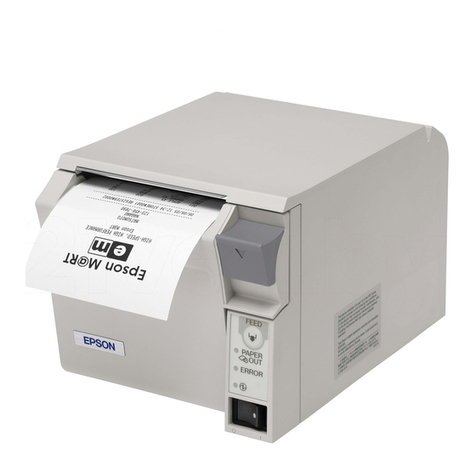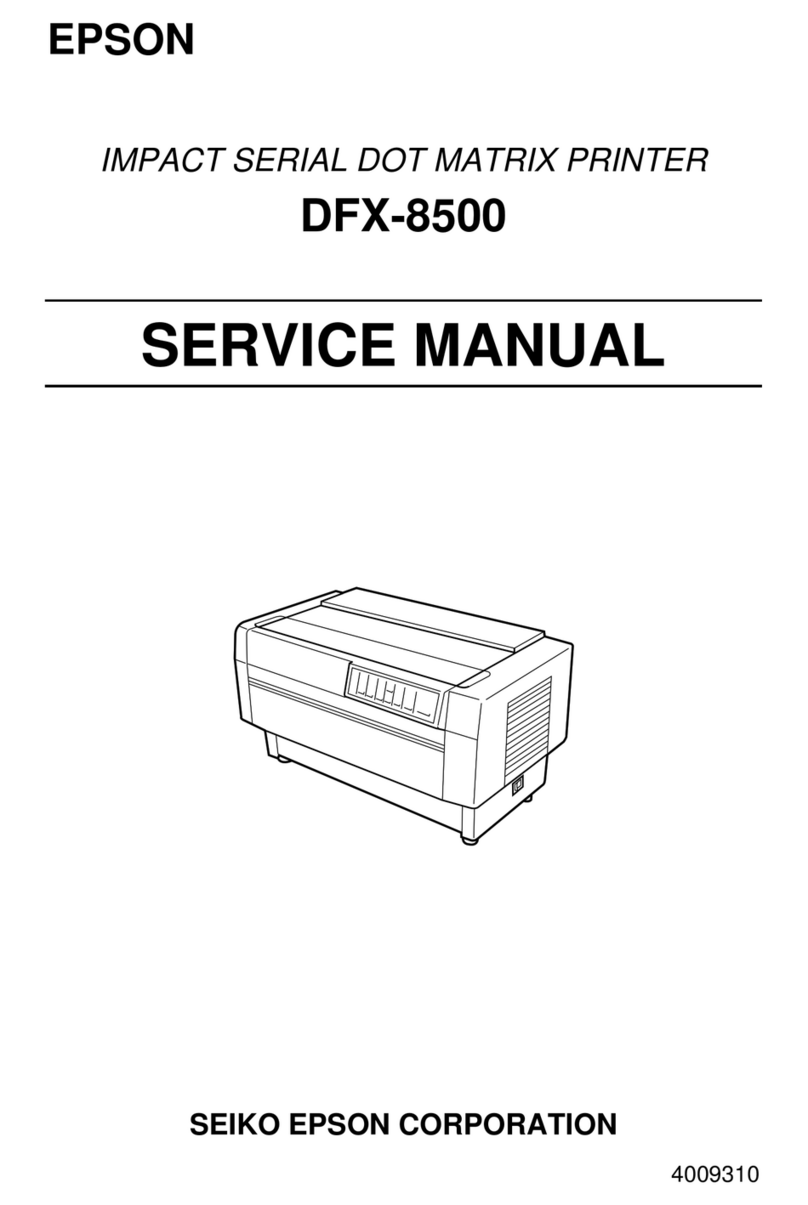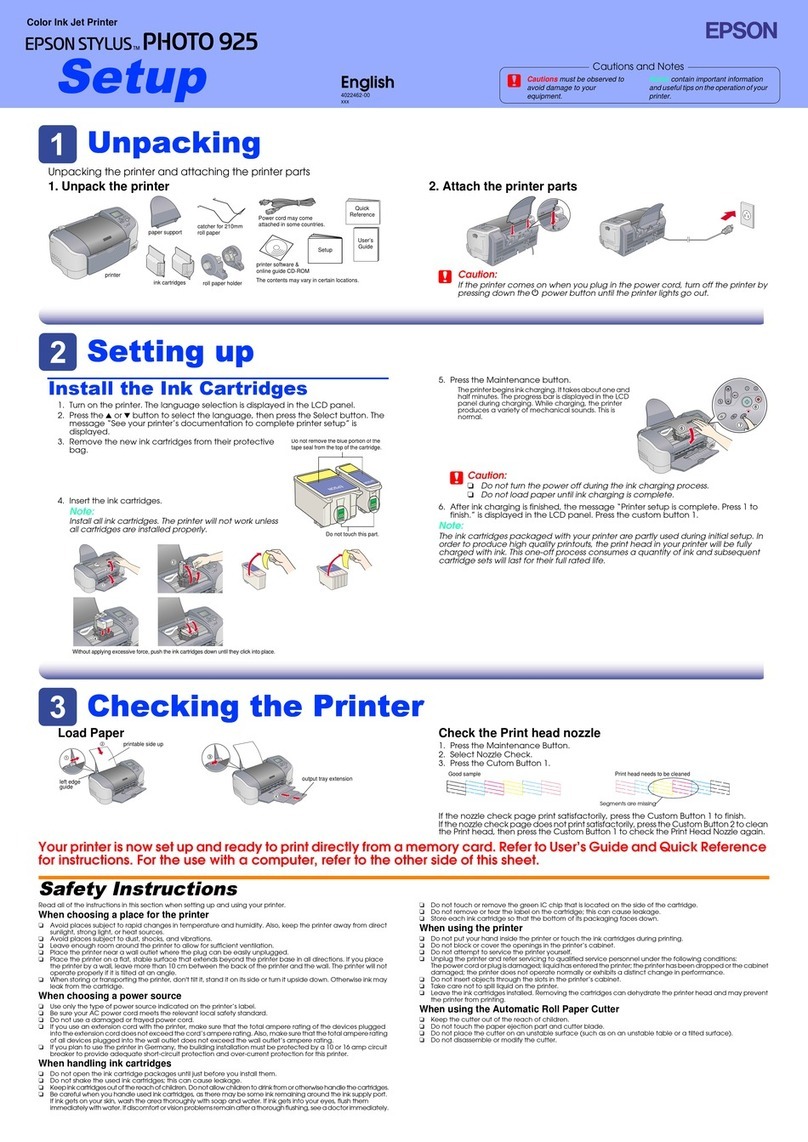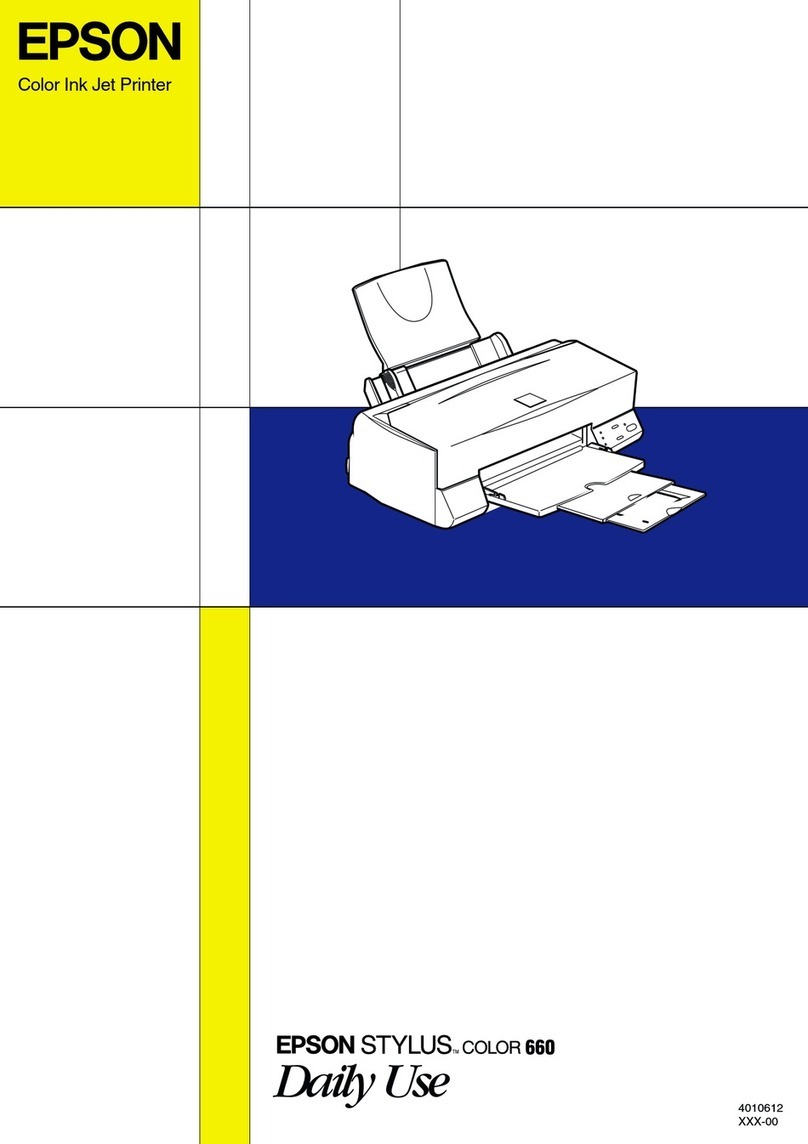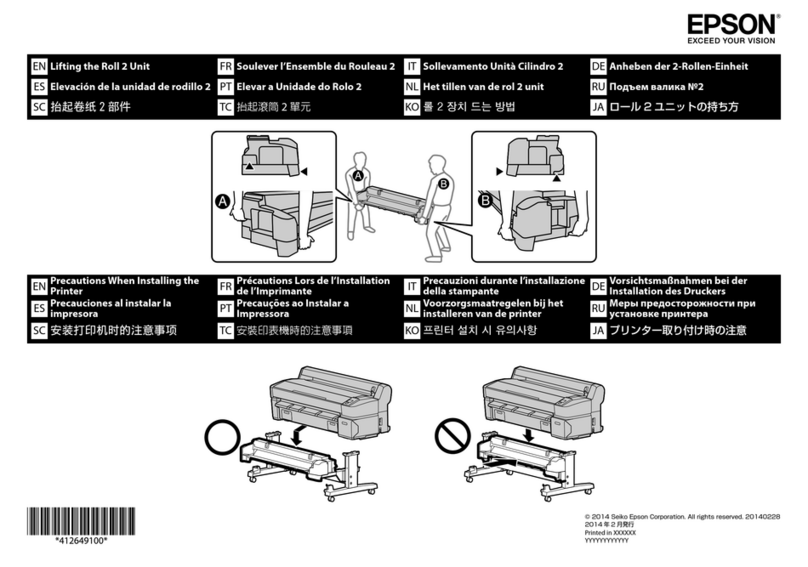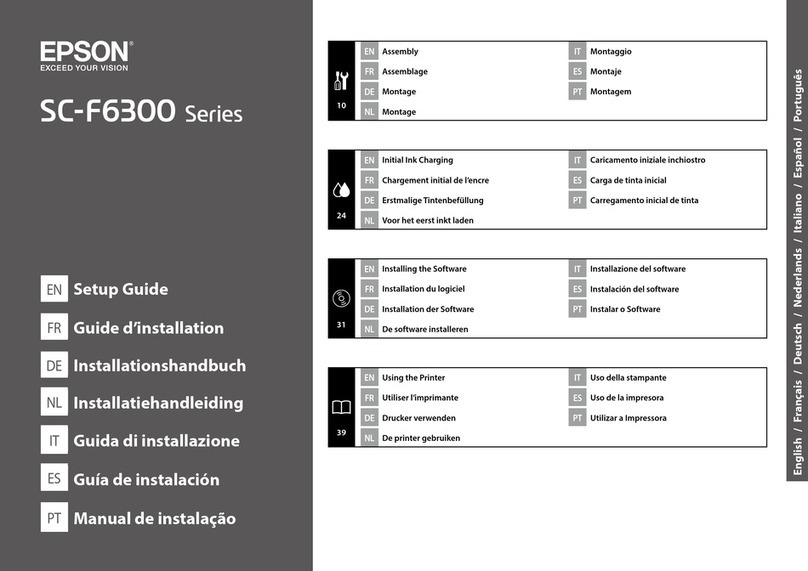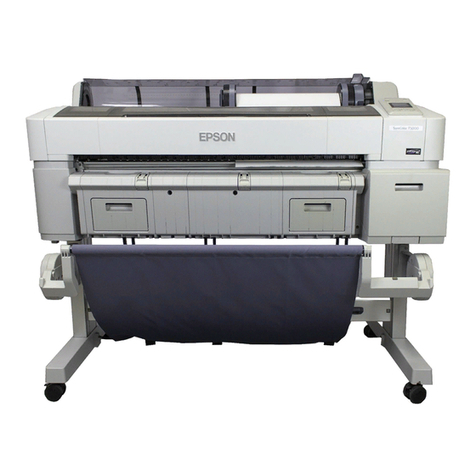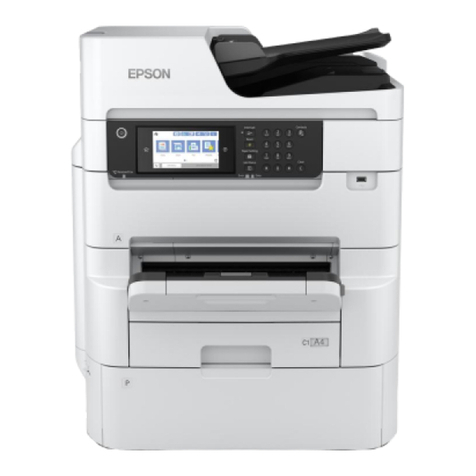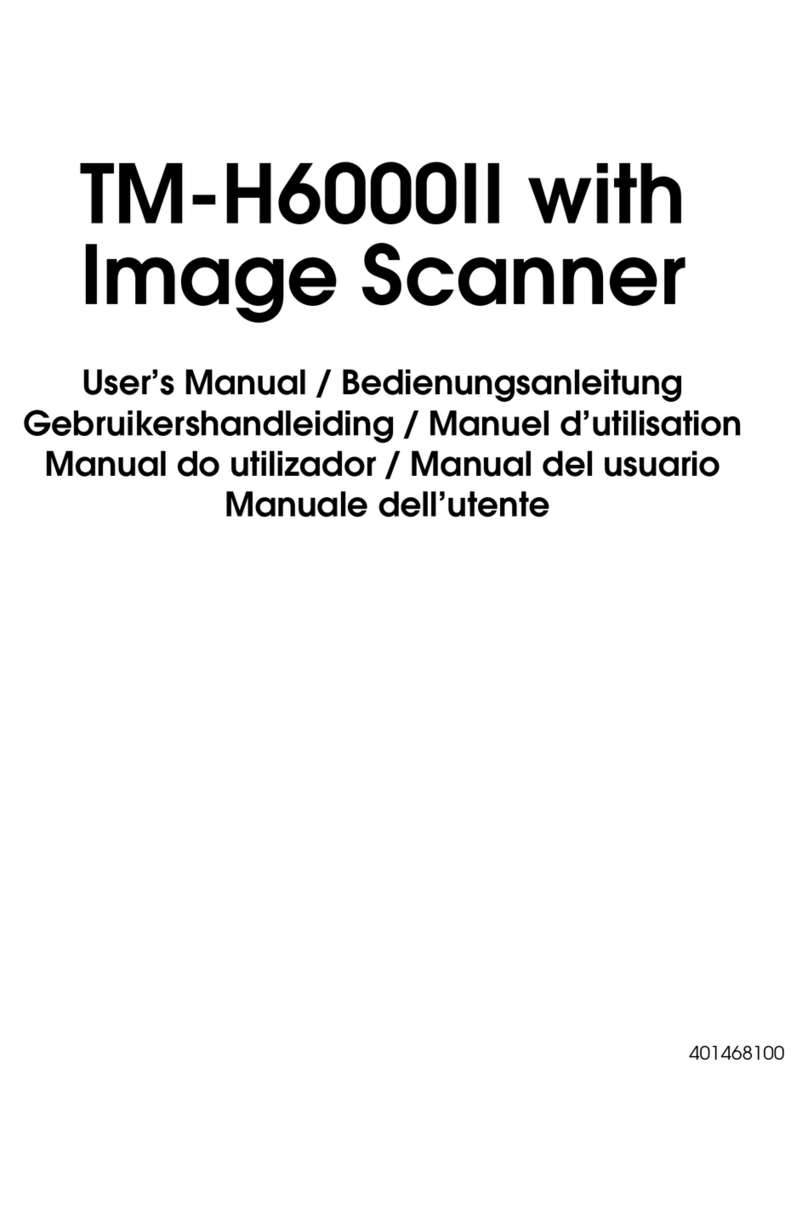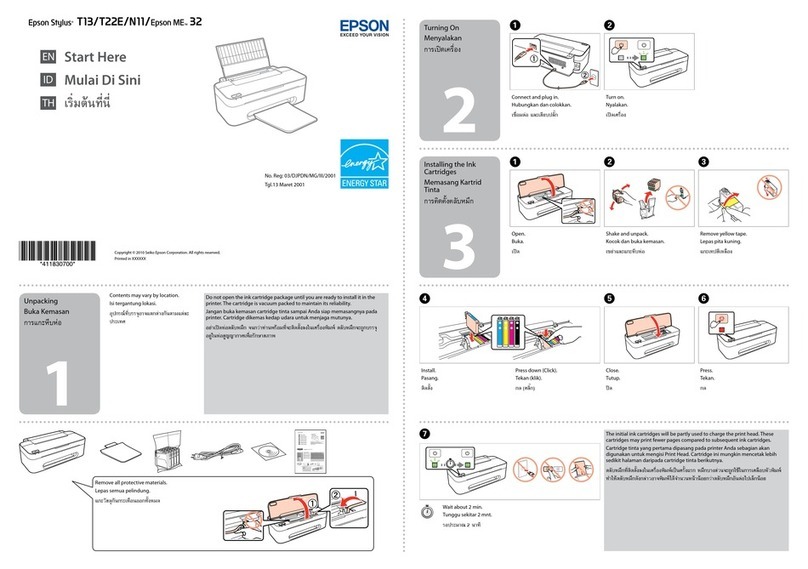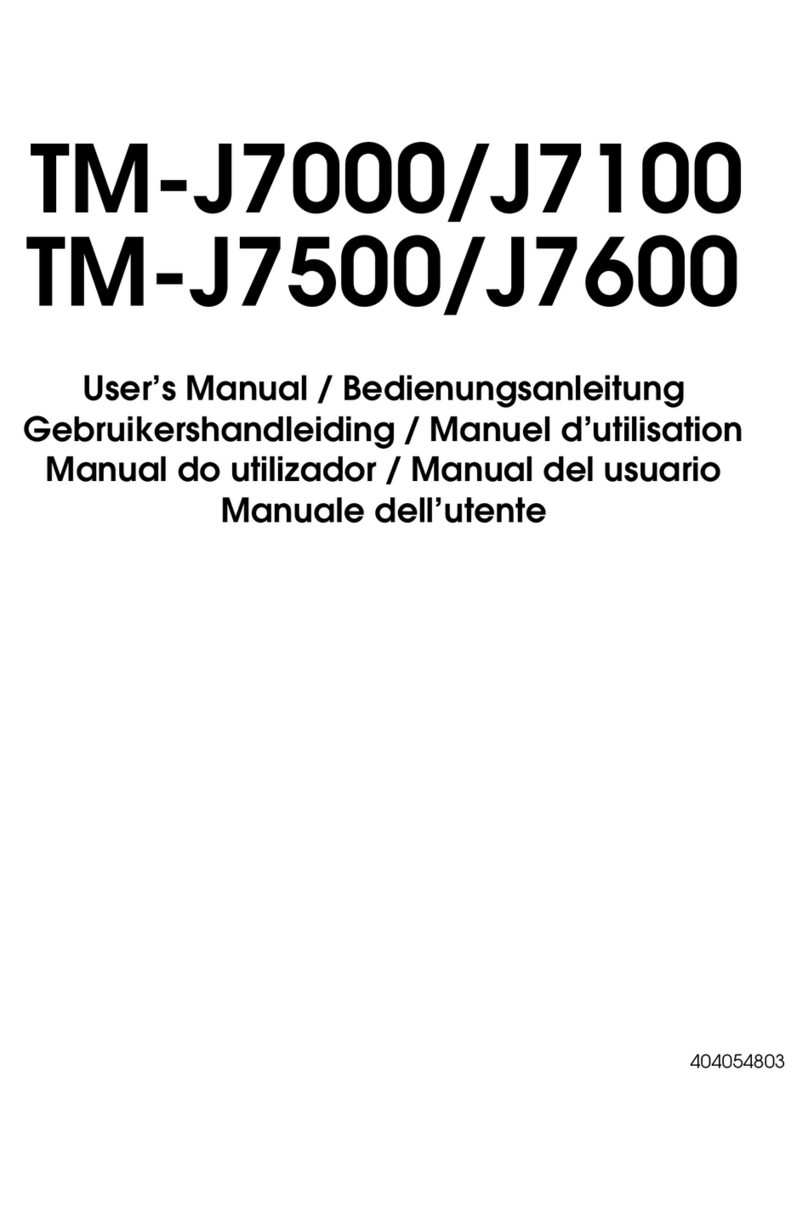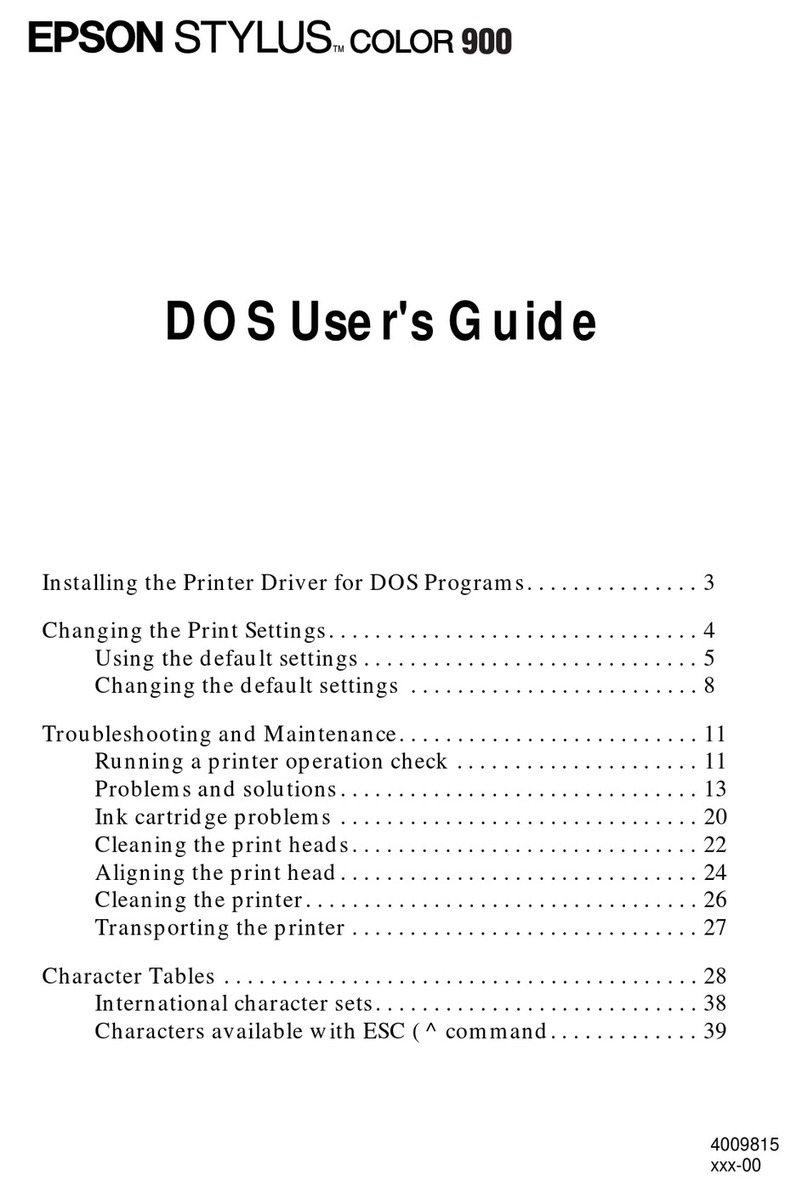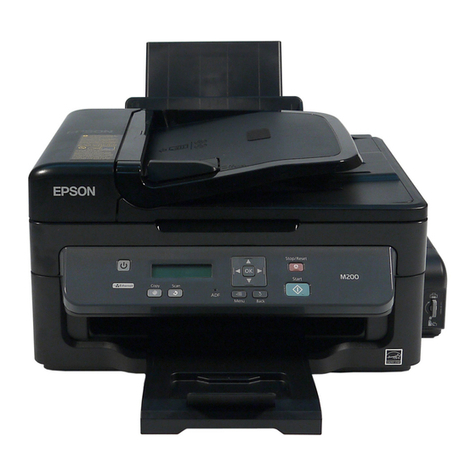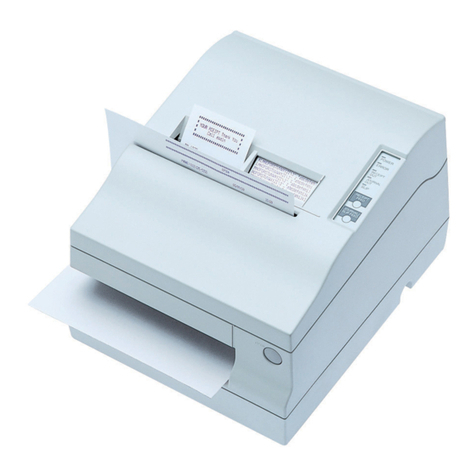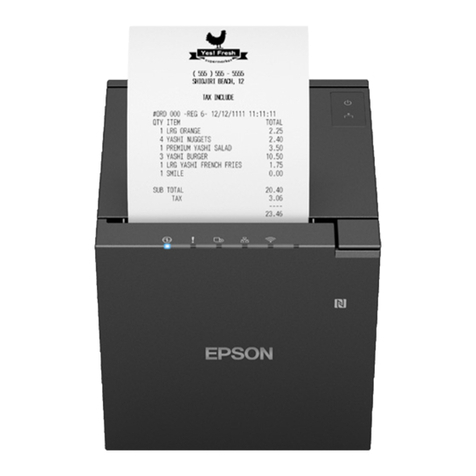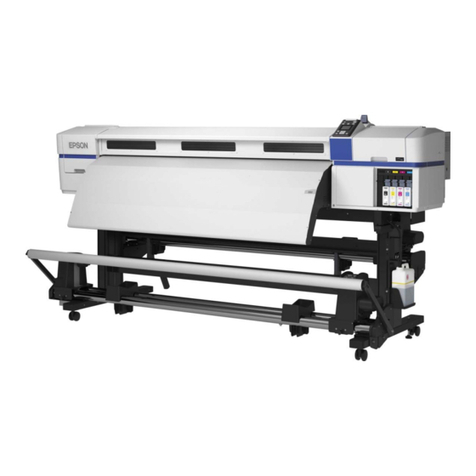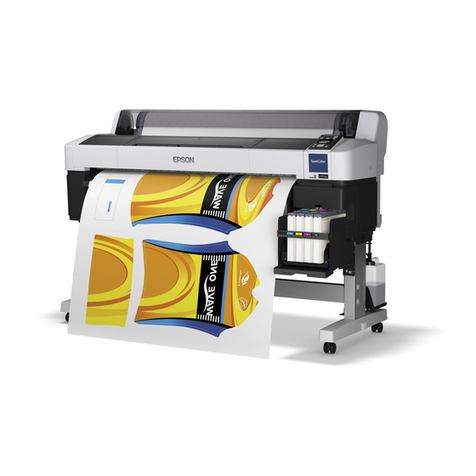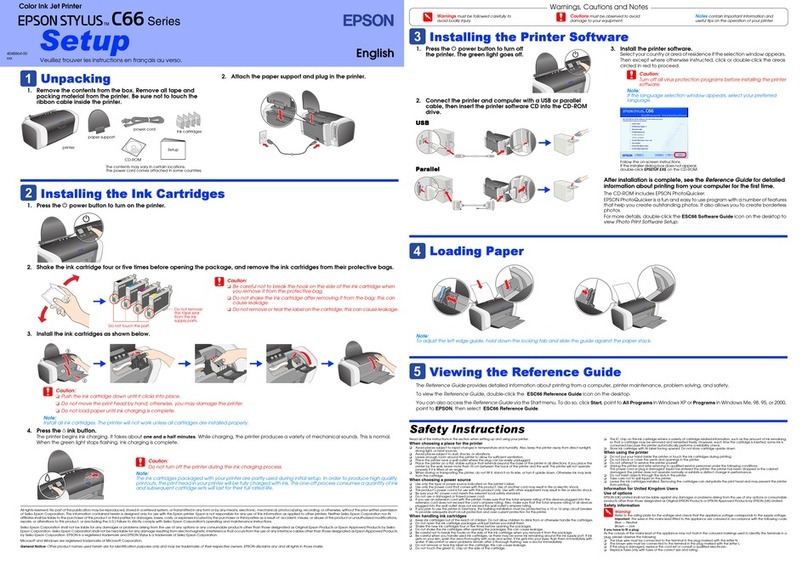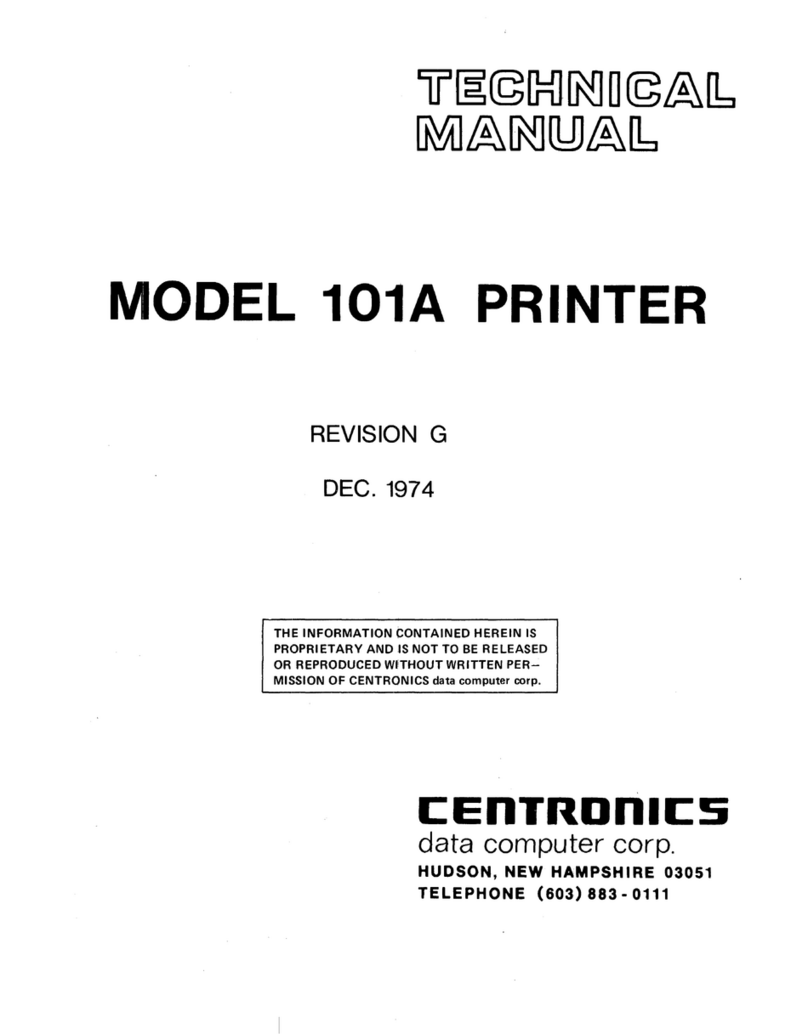
EPSON Stylus COLOR 850N
10 - EPSON Stylus COLOR 850N 4/98
Replacing an Outdated Ink Cartridge
If an ink cartridge is more than six months old, you may need
to replace it. How can you tell? You may notice that your
printouts don’t look as good as they used to. If print quality
doesn’t improve after cleaning and aligning the print heads,
you can replace one or both cartridges.
Follow these steps to replace an ink cartridge before the B
black or Acolor ink out light is flashing or on:
1. Make sure the printer is turned on and not printing.
2. Lower the output tray and raise the printer cover. Then
locate the Yblack and Xcolor cleaning buttons next to the
control panel under the printer’s cover.
Caution:
To avoid damaging the printer, never move the print heads by hand.
3. Press both the Yblack and Xcolor cleaning buttons and
hold them down for a few seconds until the black print head
moves to the left.
❏To replace the black ink cartridge, follow the instructions
beginning with step 4 of “Removing an Empty Ink
Cartridge” on page 9.
❏To replace the color ink cartridge, press the Xcolor
cleaning button and hold it down for a few seconds. After
the color ink cartridge moves to the left, follow the
instructions beginning with step 4 of “Removing an
Empty Ink Cartridge” on page 9.
Cleaning the Print Heads
If your printed image is unexpectedly light or faint, or dots are
missing from the image, you may need to clean the print
heads. This unclogs the nozzles so they can deliver ink
properly.
Cleaning the print heads uses ink, so clean them only if print
quality declines. You can clean the print heads in either of the
following ways:
❏With the Head Cleaning utility in your printer software
(when the printer is on a localport, not on a network)
❏Using the printer’s control panel buttons
Using the Head Cleaning Utility
Follow these steps to run the utility from a Windows
computer or a Macintosh:
1. Make sure the printer is turned on but not printing, andthe
Bblack and Acolor ink out lights are off.
2. Access the printer settings dialog box.
3. Click the Utility tab (Windows) or the Utility button
(Macintosh). You see the Utility menu.
4. Click the Head Cleaning button.
5. Follow the instructions on the screen to clean one or
both print heads. Cleaning each head takes about two
minutes, during which the printer makes some noise and
the Ppower light flashes.
When the power light stops flashing, you need to run a
nozzle check to test the print qualityand reset the cleaning
cycle.
Caution:
Never turn off the printer when the Ppower light is flashing,
unless the printer hasn’t moved or made any noise for more than
10 minutes.
6. Make sure paper is loaded in the printer and click Print
nozzle check pattern (Windows) or Confirmation
(Macintosh). Then click Next. See “Examining the Nozzle
Check Pattern” on page 11 for instructions.
If your print quality has not improved, repeat the steps above.
If you don’t notice any improvement after doing this two or
three times, check the print quality solutions in the User’s
Guide.
Using the Control Panel
Follow these steps to clean the print heads:
1. Make sure the printer is turned on and not printing, and
that the Bblack and Acolor ink out lights are off.
2. Open the printer cover, then press the Yblack or Xcolor
cleaning button and hold it for three seconds. Cleaning
takes about two minutes, during which the printer makes
some noise and the Ppower light flashes.
3. When the Ppower light stops flashing, repeat step 3 for the
other print head if necessary.
Caution:
Never turn off the printer when the Ppower light is flashing,
unless the printer hasn’t moved or made any noise for more than
10 minutes.
4. After you’re finished cleaning and the Ppower light stops
flashing, you need to print a page to test the print quality
and reset the cleaning cycle. If you’re connected directly to
the printer, run a nozzle check. Go to step 5.
If you’re using DOS or a network interface card, open an
application and print a document containing black and
color data. Then go to step 7.
5. Access the printer settings dialog box. Then click the
Utility tab (Windows) or the Utility button (Macintosh).
You see the Utility menu.
